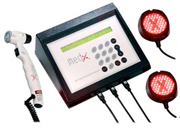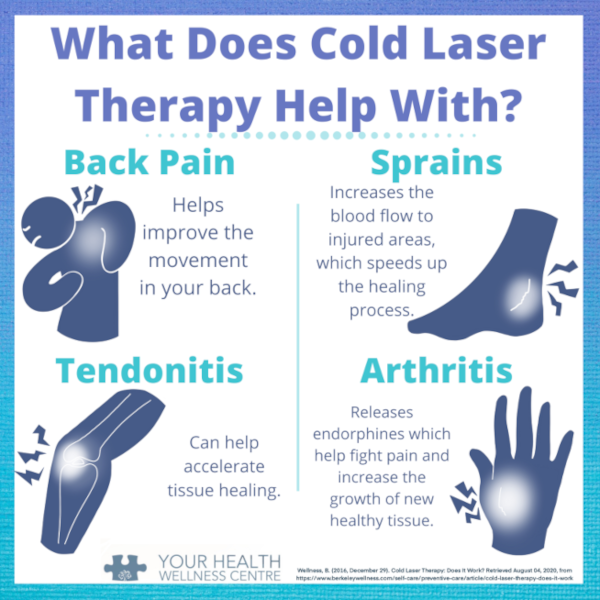- 905.829.0724
- info@yourhealthwellnesscentre.com

MedX Phototherapy, also known as cold laser or light and laser therapy, is a safe and effective treatment to temporarily reduce pain and help promote healing. Phototherapy can be used to treat acute conditions, such as sprains and strains, fractures and other wounds, and head, back, and neck pain, and chronic conditions such as arthritis and repetitive stress injuries. It can also help with post-operative rehabilitation and recovery.

Phototherapy uses superluminous diodes (SLDs) and low level laser therapy (LLLT) to produce specific wavelengths of light. Skin cells convert the light energy into biological energy, increasing local blood circulation, decreasing inflammation and swelling, and relaxing muscles. This can help reduce muscle and joint pain, stiffness, and muscle spasms.
The biological energy also accelerates tissue repair, enhances your body’s natural immune response, and prompts your body to create new blood vessels. This helps your body to heal. Research indicates that phototherapy can accelerate wound and tissue repair by as much as 30 to 40%.
| Healing Blood and lymph flow (decongestion) and formation capabilities Tensile strength and quality of repair Osteoblast production | |
| Pain Inflammation Swelling Muscle spasms and tension |
Phototherapy is used with other therapeutic and rehabilitative treatments; your doctor or therapist will determine if phototherapy might help you and the frequency of treatment that will benefit you. The frequency depends on the patient and conditions being treated. For acute or serious conditions, you might receive treatments two to three times a day. For less serious cases, treatments often start at two to three times a week, with a gradual reduction in frequency as your condition improves.
Phototherapy might be able to help you if you have any of the following conditions: